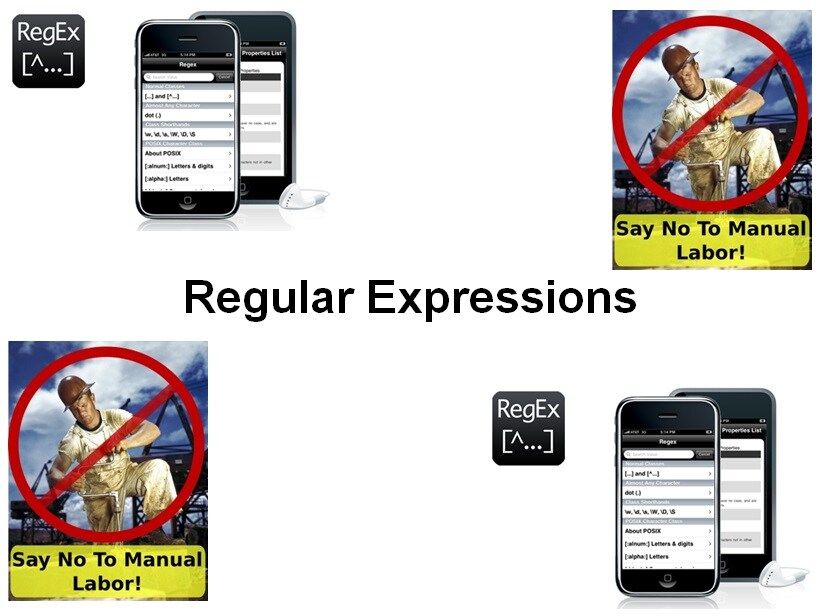-
Learning by doing
-
Trainers with practical experience
-
Classroom training
-
Detailed course material
-
Clear content description
-
Tailormade content possible
-
Training that proceeds
-
Small groups
The course Regular Expressions gives an overview of the capabilities of Regular Expressions and the way they work.
After introducing the usages of Regular Expressions and the inner operation of Regular Expression engines, the syntax of Regular Expressions is treated.
Attention is paid to the various meta characters such as those for quantification and choice and the escape sequences for special characters.
Character classes are also discussed, including character ranges, characters to match at the beginning and end of a searched string and how to match on word boundaries. Here the difference between greedy and non-greedy Regular Expressions is addressed.
Further advanced topics like the use of subgroups and backreferences are part of the course program. In this respect it is explained how subgroup expressions are defined by parentheses and how backreferences, addressed by an index or a name, ensure repeated execution of the Regular Expression.
Finally it is discussed how regular expressions can be used for substitutions.
The course Regular Expressions is intended for application managers, developers and other interested parties who want to learn how regular expressions can be used for pattern matching in applications and tools.
To participate in this course general basic knowledge of computer systems and software applications is required. Programming experience is beneficial for a proper understanding.
The theory is treated on the basis of presentation slides. Illustrative demos are used to clarify the discussed concepts. The theory is interspersed with exercises. The course material is in English.
Participants receive an official certificate Regular Expressions after successful completion of the course.

Module 1 : Intro Regular Expressions |
Module 2 : Meta Characters |
Module 3 : Character Classes |
| What are Regular Expressions? Usages of Regular Expressions Origins of Regular Expressions Regex Mini Language Regular Expression Engines Simple Regular Expressions Inner Workings RegEx Engines Multiple Matches Case Sensitivity All Characters Count Non printable Characters Regex References Regex Tools |
Meta Characters Match Any Character with dot Matching Multiple Dots Matching String Start and End Word Boundaries Alternatives with Pipes Matching Alternatives Quantifiers Optional Items Greediness Match Length Escaping Special Characters Common Character Escapes |
Using Character Classes Shorthand Character Classes Negated Character Classes Start of Line versus Exclude Character Ranges Negating Characters and Ranges Meta Characters in Character Classes Matching Word Characters Matching Non-Word Characters Matching White and Non-White Space Matching Digits and Non-Digits Repeating Character Classes Named Character Classes |
Module 4 : Subgroups |
Module 5 : Substitutions |
|
|
Matching with Backreferences Match Character Next to Itself Using One Parentheses Group Multiple Parentheses Groups Turning of Backreferences Forward References Subgroups in Languages Named Subgroups Named Backreferences Lookahead and Lookbehind |
Subsitution Example Substitution in Rx Toolkit Substitutions with s/// Substitute Operator More Substitution Examples Modifiers Perl Style Global Modifier Case Sensitivity Modifiers Replacement Patterns Transformations |
